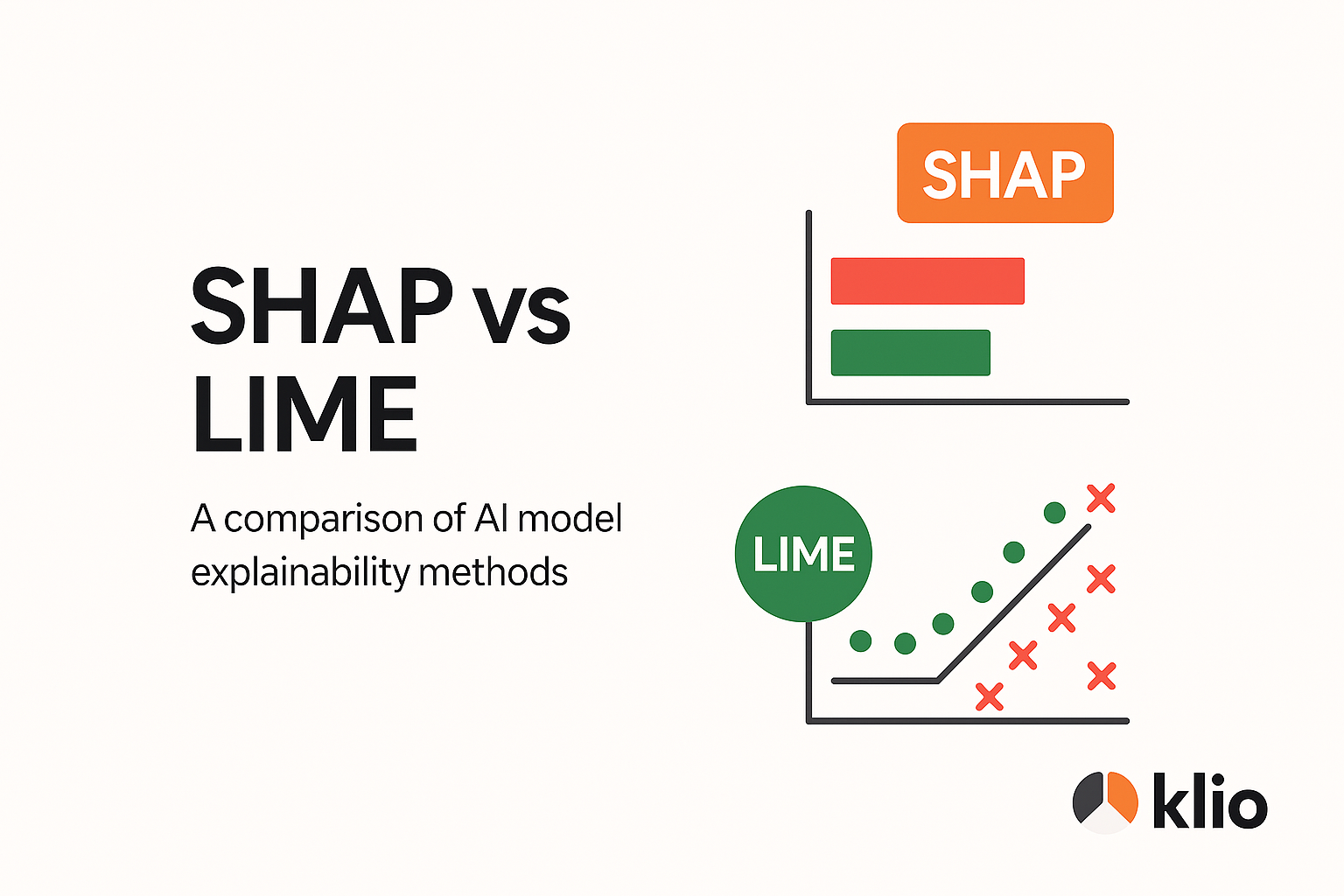
SHAP vs LIME: Choosing the Right Explainability Method
SHAP vs LIME: Choosing the Right Explainability Method
When it comes to explaining machine learning models, two techniques stand out: SHAP (SHapley Additive exPlanations) and LIME (Local Interpretable Model-agnostic Explanations). Both aim to make black-box models more transparent, but they approach the problem differently.
Understanding SHAP
SHAP values are based on game theory concepts. They allocate feature importance by considering all possible combinations of features and measuring how each feature contributes to the prediction.
Key advantages of SHAP:
- Consistency: SHAP provides consistent explanations across different models
- Global and local interpretability: Works at both individual prediction and model-wide levels
- Solid theoretical foundation: Based on Shapley values from cooperative game theory
Limitations:
- Computationally expensive for large datasets
- Can be complex to interpret for non-technical stakeholders
Understanding LIME
LIME creates simplified, interpretable models that approximate the behavior of complex models locally around specific predictions.
Key advantages of LIME:
- Intuitive explanations: Easier for non-technical stakeholders to understand
- Model-agnostic: Works with any black-box model
- Faster computation: Generally less computationally intensive than SHAP
Limitations:
- Less consistent than SHAP across different runs
- Focuses primarily on local explanations
- Sensitive to the choice of sampling parameters
Which Should You Choose?
The choice between SHAP and LIME depends on your specific needs:
- Choose SHAP when you need mathematical rigor, consistency, and both global and local explanations
- Choose LIME when you need faster, more intuitive explanations for specific predictions
Many practitioners use both methods to get complementary perspectives on model behavior.
Conclusion
Both SHAP and LIME have their place in the ML explainability toolkit. Understanding their strengths and limitations helps you choose the right approach for your specific use case.
The Klio.dev Advantage: Unified Explainability
We understand that different use cases require different explanatory approaches. That's why Klio.dev provides:
Comprehensive Explanation Tools
| Feature | Description |
|---|---|
| Integrated Analysis | Combined SHAP and LIME visualization |
| Comparison Tools | Side-by-side method comparison |
| Custom Reports | Tailored for diverse analytical needs |
Unified Insights
-
Seamless Switching
- Toggle between global and local explanations
- Instant context switching
-
Interactive Tools
- Dynamic visualization
- Real-time updates
-
Actionable Insights
- Cross-model compatibility
- Practical recommendations
Bridging the Explanation Gap
Why Choose Between SHAP and LIME?
Traditionally, data scientists have been forced to choose between SHAP and LIME. Klio.dev breaks down this false dichotomy by offering:
"The power of comprehensive model interpretation lies not in choosing between methods, but in leveraging their complementary strengths."
- 🔄 Simultaneous SHAP and LIME analysis
- 📋 Contextual recommendations
- 🔍 Comprehensive model transparency
The Future of Model Interpretability
As AI becomes more complex, the need for nuanced, accessible explanations grows. Klio.dev is at the forefront of this revolution, providing tools that transform opaque predictions into clear, actionable insights.
Key Takeaways
- Both SHAP and LIME offer unique explainability approaches
- Global vs. local explanations serve different purposes
- Comprehensive tools are crucial for modern AI development